Fri, 23 Jan 2015 . Last updated Thu, 25 Jun 2015 09:00


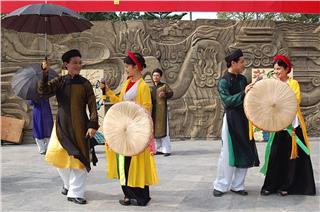
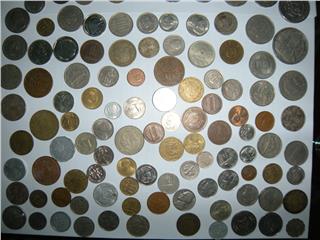

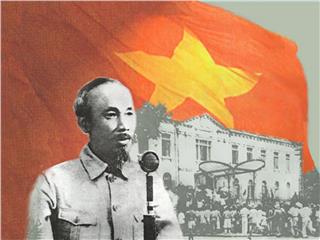
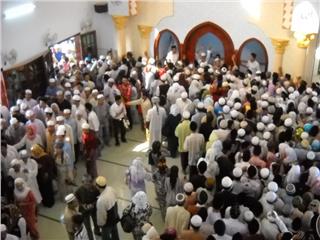

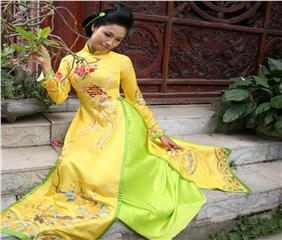
Legend says that under the reign of the 7th Hung King in Dong Lo there was a rich man called Lang Vi. He was a generous and handsome man. His wife was Dao Thi Lieu who was beautiful, gentle, resourceful and benevolent. They were very rich but didn’t have a child. Thus, they often came to holy sites to pray for a child. One day they visited Thach Ban peak of Tam Dao mountain range and prayed for a child at the pagoda there. It got darker and darker. They spent the night at a lean-to of the pagoda.
It was the 3rd watch when Lieu saw in her dream a five-colored mass of clouds covering the pagoda and releasing scent. In the middle of the clouds appeared an eagle and then a group of 7-8 beautiful fairies playing lute, singing and dancing. Lieu suddenly woke up from the dream which she believed to bring good luck. After that day she became pregnant. Then she gave birth the 10th day of the 5th lunar month of the year of Giap Than. The child, who was a girl, was named Lang Thi Tieu.
When she was small, she appeared extraordinary. When she was 20, she was known as a talented and admirable heroine. As there was an invasion, at the Hung King’s order, Lang Thi Tieu recruited 3,000 soldiers. The king gave her more troops and horses. She then defeated the enemy. Returning home in triumph, she was asked to enter the court. But she refused the king’s request and asked for permission to come back to her hometown to take care of her parents. The king agreed, conferred the title “Tam Dao Son Tru Quoc Mau” (Tam Dao National Mother) on her and let her rule Dong Lo.
After her parents passed away, she worshiped them with great respect. One day, she went to the Tay Thien pagoda on Thach Ban peak to pray to the Buddha. On the way home the next day, she felt tired and took a break. It suddenly got dark. From a mass of five-colored clouds an angel appeared and said: “The Heavenly Emperor ordered you to come back to Heaven, princess!” Then she washed herself carefully, followed the angel into the clouds and disappeared. It was the 15th day of the 2nd lunar month. After she returned to Heaven, people in Dong Lo and surrounding areas built a temple to worship her.
Tay Thien is not an administrative unit, nor a natural geographic unit. It’s exactly the space dedicated to Tay Thien National Mother, a Mother Goddess. Her worshipping is mainly practiced on Thach Ban park in Dai Dinh commune, then spread to the districts of Binh Xuyen, Tam Duong and Lap Thach and Vinh Yen city. The districts above are part of the Tam Dao mountain range. It explains why the mother Goddess has the title “Tam Dao Son Tru Quoc Mau Supreme Heavenly Goddess”.
According to statistics made in the Canh Hung year (1763), the 24th year under the reign of King Le Hien Tong, 54 cantons and communes in this area had Tay Thien National Mother temple. Specifically, Tam Dao had 14 temples, Lap Thach 18, Tam Duong 5, Binh Xuyen 4, and Vinh Yen city 7. And now there are 48 temples in total. It can be said that the temples above have created a special space dedicated to the Tay Thien National Mother. Noticeably, the worship of Tay Thien National Mother cannot be found anywhere else.
Mau Sinh temple is located on a large and high mould facing immense fields. The temple is built in the shape of character “ding”. The statue of the Tay Thien National Mother is placed at the highest position in the sanctuary. There remain many horizontal lacquered boards and pairs of parallel sentences in the temple, for example: “National Mother descending on Earth, Temple of Sacred Mother Goddess”. “Trees have roots, water has sources”.
Mau Hoa temple was earlier called Dong Lo canton communal house because this was the largest religious building in the canton. The temple is built in the shape of character “ding”, with the 3-compartment front hall and the 2-compartment sanctuary. In the sanctuary there are the throne, the votive table and the statue of the National Mother. Thong temple is situated at the foot of Thach Ban Mountain in Khon Thong hamlet, Son Dinh commune, Quan Ngoai canton, Tam Duong district, Vinh Yen province or Dai Dinh commune, Tam Dao district, Vinh Phuc province today. The temple is called Trinh temple.
According to local researchers, as the temple is located at the foot of the mountain, by the forest track that leads to the Thuong Tay Thien temple, it is called Trinh temple. The temple now keeps a 4-faceted stone stele with records: “Tam Dao scared mountain” erected in the 5th year of Bao Thai (1723), “Thach Lap stone stele”, “Tay Thien pagoda”, “From all over the world”. Thuong temple stands at an altitude of 530m. As thought by the locals, the temple is home to National Mother Lang Thi Tieu and this is the most important temple in the system of temples dedicated to her. Here come some horizontal lacquered boards and pairs of parallel sentences in the temple: “Sacred temple dedicated to National Mother. She defeated the invasion, rendered services to the nation. Her great deeds will be remembered for good. She brought peace to the nation, prosperity to people and did charity. She deserved the title National Mother and her name was recorded in the history.”
Tam Dao has long seen as a sacred land where the spirit of the nation gathers. As for physical geography, Tam Dao has 3 towering tops. The mountain range stretches away to the northeast of the capital city of Van Lang. According to feng-shui principles, Tam Dao is “Thanh Long” (green dragon) on the left side and Tan Vien Mountain is “Bach Ho” (white tiger) on the right side of Nghia Linh Mountain, the ancestral mountain in the Hung King era. The mountains created a favorable location for the capital city of Van Lang in the past. And Tam Dao mountain range is seen as the symbol of feminism. It was part of the legend of the 7th Hung King.
The king met and got married to a fairy called Ngoc Tieu at Tam Dao. The fairy was called National Mother by people of the succeeding generations. On the opposite side is Tan Vien Mountain that is linked closely to the legend of the God of Tan Vien, son-in-law of the 18th Hung King. The mountain becomes the symbol of masculinity. Regarding its location, Tam Dao is not so far from the Thang Long royal citadel. Seen as the sacred mountain, feudal dynasties turned Tam Dao into the altar of gods of natural phenomena. It explains why the Goddess of Tam dao was honored as “Tam Dao Son Tru Quoc Mau supreme Heavenly Goddess”.
In terms of the terrain, Tam Dao has high mountain tops, deep streams, thick forest and uninterrupted mountain range. With stunning landscape, imposing mountains, Tam Dao is magnificent but amazingly tranquil, eligible for religious life. That’s why this place used to be a center of Buddhism, at the same time the starting point of the relations between Buddhism and the worship of Mother Goddess which later produced the image of Tay Thien National Mother.
In Tay Thien, pagodas dedicated to the Buddha are often found next to Tay Thien National Mother temples. Unlike religious buildings with familiar arrangement “tien Phat hau Thanh”, i.e. shrines dedicated to Mother Goddesses come second after the places of worship dedicated to the Buddha. Mother Goddess temples in Tay Thien are separated from and as big as pagodas. What makes the relations between Buddhism and the worship of Mother Goddess here?
First, it originates from the local folk belief. The thought “Everything has spirit” has take roots deeply in the soul and mind of Vietnamese people. Thus the native belief of worshipping mountain gods and other gods of natural phenomena must have been practiced long before Buddhism, an exotic religion, entered the country. It is proved through temples here. In other words, pagodas in Tay Thien were built when temples dedicated to the god of local mountains had already been there.
As time goes by, the god of the mountains was recognized nationally and honored as the National Mother. When the Mother Goddess of Three-Four Palace worship got thriving, the National Mother played a new role: “Mau Thuong Ngan” (Goddess of Forests). Generally speaking, the greatest difference between Buddhism and the worship of Mother Goddess in general, the worship of Tay Thien National Mother in particular, is that the former pays attention to the soul of the dead, while the latter cares for people when they are alive. Both the factors make the human spiritual life balanced.
When spring comes, on the 15th day of the 2nd lunar month every year, the locals organize Tay Thien festival to honor the sacred Goddess and pray for peace, prosperity and happiness. Before the festival in Dai Dinh commune, Tam Dao district, people everywhere flock to the land of the National Mother. The festival is held annually to revive time-honored values of traditional culture and promote good moral principles such as “when you drink from a stream, remember its source” and nurture the national pride.
Through many ups and downs, the worship of Tay Thien National Mother in Tam Dao, Vinh Phuc, has changed but still keeps the core values. This folk belief has undergone a long journey: established, changing and receiving elements of different cultures and religions. That’s why it can be said that the worship of Tay Thien National Mother in Vinh Phuc is the nice blend of native belief, from the worship of the gods of natural phenomena, the ancestor worship, the worship of village’s tutelary god and the Mother Goddess of Three-Four Palace worship, a folk religion of Vietnamese people. The existence and development of the worship of Tay Thien National Mother in modern life prove the great vitality of national culture on the way to the global integration.
Source: VTC10 - NETVIET

 Đặt vé máy bay cho người Việt?
Bấm vào đây
Đặt vé máy bay cho người Việt?
Bấm vào đây
Our service uses cookies for technical, analytical and marketing purposes. See our Cookie và Privacy policies for more information. If you agree to this, just keep browsing.


